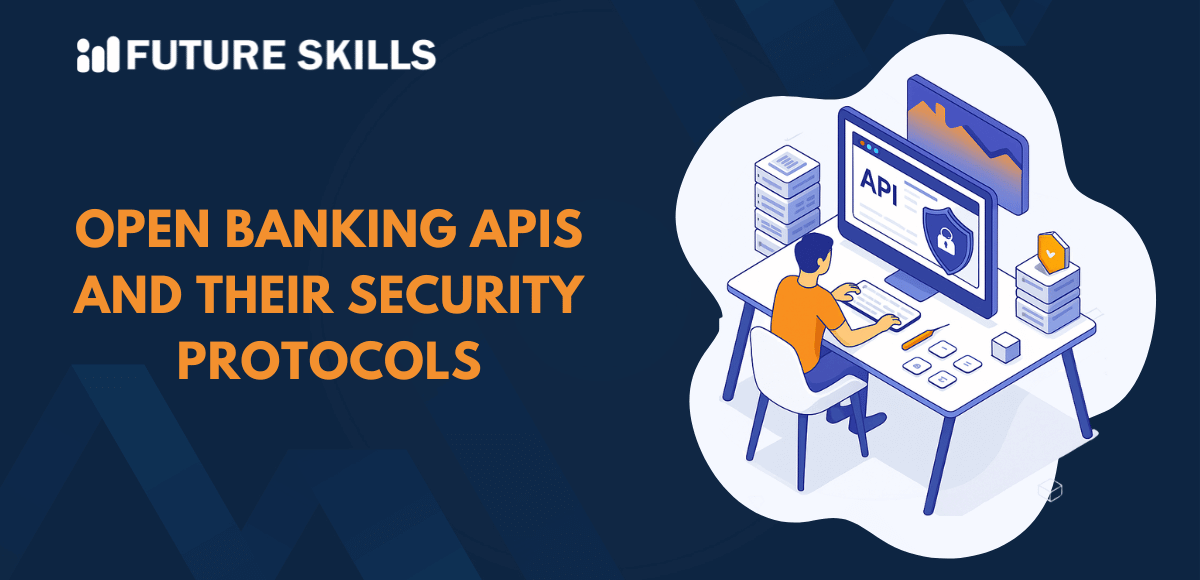Open banking is one of the most anticipated trends in the domain of fintech. You must know that open banking APIs have emerged as one of the promising solutions to embrace the functionalities of open banking in financial services. The emphasis on open banking API security has been growing continuously as financial services face the threats of different risks. You must know the important mechanisms and protocols that safeguard open banking APIs and help you build trustworthy applications. Let us learn more about open banking APIs and their security from the perspective of a developer.
Understand how fintech is revolutionizing finance and develop a career with our Fintech Certification Program. Enroll now!
Value of Open Banking APIs for Developers
The revolutionary changes in the financial landscape have been possible due to the arrival of new technologies like open banking. One of the notable highlights associated with the rise of open banking is the approval for regulations that have been breaking down conventional silos in the financial services industry. The primary impact of trends such as open banking is visible in the growing need for innovation.
As open banking slowly gains momentum in adoption, many people wonder about the things that drive their functionalities. The discussions about open banking API standards take the limelight in such scenarios as open banking APIs play a vital role in ensuring standardized and secure communication between financial institutions and third-party open banking service providers.
Open banking presents numerous opportunities for developers to create innovative financial solutions, including automated lending platforms and personal finance management tools. At the same time, developers must pay attention to special measures for safeguarding sensitive financial and personal data from malicious agents.
Enroll now in the AI and Fintech Course to familiarize yourself with the best practices for implementing AI and fintech solutions.
Multi-layered Approach to Security of Open Banking APIs
The general assumption about security of open banking APIs is that you can rely on a specific standard. On the contrary, the answers to “How secure is open banking?” depend on a comprehensive multi-layered approach. The security of open banking APIs depends on a blend of robust authorization, encryption, continuous monitoring and authentication. The following highlights of open banking security will show you how developers can safeguard open banking APIs.
-
Strong Customer Authentication
One of the layers of security for open banking APIs is Strong Customer Authentication or SCA. It calls for using two independent elements for verifying the identity of a user. You can pick the questions from three areas, such as knowledge, inherence and possession. The knowledge element focuses on something that only the user will know, such as a password or a code. The inherence element emphasizes something of the user, such as their face or fingerprint. Finally, the possession element is about something that the user owns, such as hardware tokens or a smartphone.
Developers must learn about the different SCA elements to create secure solutions. When third-party providers begin a request that requires user permission, the user will be redirected to the authentication page of the financial institution. Upon achieving a successful redirect flow, the financial institution or the bank will manage the SCA process. As a result, the third-party provider will never have direct access to the authentication credentials of users.
-
Mutual TLS for API Communication
The next crucial aspect in security of open banking APIs is mutual TLS or mTLS. Standard TLS/SSL encryption methods help in safeguarding data in server authentication and data in transit. Mutual TLS is a powerful open banking security protocol which adds another layer of security. The protocol calls for the third-party provider and the bank to verify each other’s identity through digital certificates. You can clearly observe how mutual TLS helps in creating a strong relationship between financial institutions and open banking service providers.
The general workflow of open banking involves allocating a Qualified Website Authentication Certificate or QWAC and Qualified Seal Certificate or QSealC. Only a Qualified Trust Service Provider or QTSP can provide these credentials, which serve distinct purposes. First of all, QWAC helps in identification and authentication of the third-party provider’s app or website. The QSealC credential helps in digital signature of payment initiation requests and other sensitive information.
-
Data Encryption
The most common security protocol for open banking APIs is data encryption. While mutual TLS is a trusted protocol for safeguarding data in transit, you must also have something to protect data at rest. Therefore, open banking APIs use protocols for encryption at rest, which implies storing sensitive financial data in caches or databases with encryption.
The protocol for encryption of data at rest involves using algorithms, such as AES-256 for safeguarding sensitive data at rest. One of the important priorities in such cases is the secure storage and rotation of keys. Developers can rely on credentials like QSealC for ensuring integrity of data in transit before storing it in databases. On top of it, developers must also check whether they have actually received a message from the third-party provider.
-
OAuth 2.0 and OpenID Connect
You cannot think of open banking security without OAuth 2.0 and OpenID Connect, the two most crucial protocols for authorization and authentication. OAuth 2.0 is a common highlight in open banking examples as it is a popular authorization framework. OAuth 2.0 is more than just an authentication protocol as it provides a comprehensive framework for delegated authorization. It helps in enabling a third-party provider to access the resources of users on the server of a financial institution without explicit consent of users. The working of OAuth 2.0 protocol revolves around the access token, which is a time-limited credential issued by the financial institution to the third-party provider.
You must keep an eye on the notable flows for OAuth 2.0 adopted in open banking to understand how developers use it. The first way to use OAuth 2.0 is for authorization code grant, which is common in web applications. The authorization code grant involves the third-party provider redirecting users to the authorization endpoint of the bank. Subsequently, the user will provide authentication and give consent, after which the bank gives an authorization code which can be exchanged for the access token. Another flow of OAuth 2.0 for open banking is the client credentials grant which supports machine-to-machine communication without user context.
You might be wondering about the role of OpenID Connector OIDC in all of this. It is important to know that OIDC is an identity layer that helps third-party providers in verifying the identity of end users. OIDC brings an ID token which is a JSON Web Token with information about the user.
-
API Security Gateways and Firewalls
The use of API security gateways and firewalls is also another prominent addition among open banking security protocols and standards. API security gateways provide a critical protection layer between core banking systems and third-party providers. The gateways can perform different security functions before the requests reach APIs. What are the special features offered by API gateways for safeguarding open banking APIs?
The workflow of API security gateways involve traffic filtering, which helps in blocking malicious traffic on the basis of known attack patterns, IP addresses and geographic location. API security gateways also implement input validation to ensure that incoming data follows the standards for expected formats and prevents injection attacks. The gateways also prevent denial-of-service attacks by imposing limits on the number of requests from one source.
Level up your AI skills and embark on a journey to build a successful career in AI with our Certified AI Professional (CAIP)™ program.
Role of Developers in Security of Open Banking beyond Protocols
Many of you might have assumed that developers can rely only on protocols and standards for security of open banking APIs. Interestingly, developers also have many responsibilities beyond compliance with open banking API standards for security. Developers follow certain best practices to create secure open banking solutions. For instance, developers must always follow secure coding practices to avoid common risks such as cross-site scripting or injection flaws.
Another crucial recommendation for developers to enhance security of open banking APIs is regular security audit. Independent security audits and comprehensive penetration testing can help in identifying and addressing the vulnerabilities of open banking APIs.
Developers should always work with the least privilege principle which calls for working with the minimum permissions. It also implies that developers should not have access to data that they don’t need. Developers can also contribute to security of open banking APIs by adding security considerations in every phase of the software development lifecycle.
The other important entries in a developer checklist for security of open banking APIs include vendor security assessment and staying informed about latest advancements. Developers must use comprehensive assessment of vendor services and learn about new trends, vulnerabilities and best practices for security of open banking APIs.
Final Thoughts
Open banking APIs serve as the bridge for communication between third-party service providers and financial institutions. The security of open banking APIs is one of the foremost concerns of developers, with sensitive data at risk. Every open banking security protocol and standard focuses on ensuring safeguards against unauthorized access to sensitive financial and personal information. Interestingly, developers also have a critical role in security of open banking APIs. Developers must follow the best practices for developing secure APIs to avoid any breaches. Open banking API has a crucial role in transforming the financial services industry with their power of innovation. Learn more about open banking and its significance in the financial services industry now.



